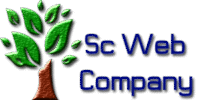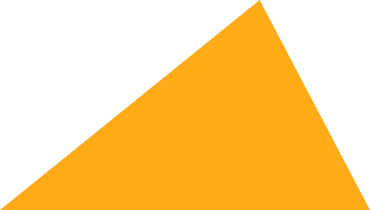Photography Designer
All Service
- Development
- UI/UX Designing
- Digital Marketing
- Data Analysis
- Cyber Security
- Digital Experience
- Manage It Service
- Graphic Designer
- Motion Graphics
- Photography Designer
- Software
- Videographer
- Server Administrator
- Photography Designer
- Database Backup
- Live Broadcast
- Network Administrator
- Social Media
- Website Repair and Build

📸 Photography Designer: Blending Visual Art with Strategic Impact
In an age where visuals dominate digital communication, Photography Designers play a pivotal role in shaping how brands, stories, and emotions are captured and conveyed. They go beyond simply taking photos—they curate, edit, and design photographic content to align with creative direction, brand identity, and audience expectations.
🔍 What Is a Photography Designer?
A Photography Designer is a creative professional who combines photography with design principles to produce visually compelling and contextually relevant imagery. Their work spans photo editing, composition, retouching, layout design, and integration of photography into broader visual systems—such as websites, campaigns, publications, and multimedia assets.
🧠 Why Photography Designers Matter
• Visual Storytelling: They craft narratives through curated imagery that evokes emotion and meaning.
• Brand Consistency: Ensure that photographic content aligns with brand aesthetics and messaging.
• Marketing Impact: High-quality visuals increase engagement, conversions, and shareability.
• Cross-Platform Adaptability: Optimize images for web, print, social media, and motion graphics.
• Creative Direction: Collaborate with designers, marketers, and art directors to shape visual strategy.
🛠️ Core Skills of a Photography Designer
1. Photography & Composition
Mastery of lighting, framing, and subject placement to capture impactful shots.
2. Photo Editing & Retouching
Using tools like Adobe Photoshop and Lightroom to enhance, correct, and stylize images.
3. Color Grading & Tone Mapping
Adjusting hues, contrast, and mood to match brand or campaign tone.
4. Layout & Integration
Designing how photos fit into banners, brochures, websites, and social media posts.
5. Visual Branding
Applying consistent filters, overlays, and treatments to maintain brand identity.
6. Creative Collaboration
Working with stylists, models, designers, and clients to execute a unified vision.
7. Asset Optimization
Preparing images for different formats—responsive web, print resolution, mobile screens.
🏢 Photography Design Across Industries
Fashion & Lifestyle
• Editorial shoots and lookbooks
• Social media campaigns and influencer content
• E-commerce product photography
Retail & E-Commerce
• Product showcases with branded styling
• Lifestyle imagery for landing pages
• Seasonal campaign visuals
Corporate & Branding
• Executive portraits and team photography
• Office and culture documentation
• Visual assets for presentations and reports
Hospitality & Travel
• Destination and experience photography
• Hotel, restaurant, and event visuals
• Immersive storytelling through imagery
Healthcare & Wellness
• Patient-centered visuals
• Facility and staff photography
• Educational and promotional content
Education & Nonprofits
• Event documentation
• Community and impact storytelling
• Campaign visuals for fundraising and outreach
📊 Key Benefits of Photography Design
• Builds emotional connection with audiences
• Enhances credibility and professionalism
• Supports storytelling across digital and print media
• Improves SEO and social media performance
• Elevates brand perception and engagement
🧰 Popular Tools & Platforms
• Adobe Photoshop / Lightroom – Editing, retouching, and color grading
• Capture One – Professional tethered shooting and RAW processing
• Canva / Figma – Layout design and asset integration
• InDesign / Illustrator – Print-ready compositions and visual systems
• Google Photos / Dropbox / Frame.io – Asset management and collaboration
• Unsplash / Pexels / Shutterstock – Stock photography sourcing and licensing
✅ Best Practices for Photography Designers
• Shoot with purpose—know the story you want to tell
• Maintain consistent lighting and color across assets
• Use grids and layout principles for visual harmony
• Optimize file sizes for performance without losing quality
• Stay updated on trends in photography and design
• Collaborate closely with content creators and developers
🚀 Future Trends in Photography Design
• AI-Assisted Editing & Composition
• 3D & Holographic Photography Integration
• Augmented Reality (AR) Visuals
• Interactive Photo Experiences
• Sustainable & Ethical Visual Storytelling
• Modular Photo Libraries for Brand Systems
Why Choose Our Scwebcompany?
Tech Services
Lorem Ipsum is simply dummy typesetting industry.
It Consulting
Lorem Ipsum is simply dummy typesetting industry.

Our Few Benefits
Nam vel lacus eu nisl bibendum accumsan vitae vitae nibh. Nam nec eros id magna hendrerit sagittis.
Namnec Eros Id Magna Hendrerit
- Nibh. Nam nec eros id magna hend
- Vitae nibh. Nam nec eros id magna he
- Nam nec eros id magna
Is My Technology Allowed On Tech?
In today’s fast-paced digital landscape, innovation thrives on collaboration and accessibility. But before launching your product or service on a tech platform, it’s essential to ask: Is my technology allowed here? At Tech, we welcome a wide range of technologies — from cutting-edge software tools and hardware solutions to AI-driven platforms and IoT devices. However, to ensure safety, compliance, and a positive user experience, all submissions must meet our core eligibility criteria: ✅ What We Accept • Legally compliant technologies that respect intellectual property rights and data protection laws. • Secure and stable solutions that do not compromise platform integrity or user privacy. • Innovative tools that contribute to the tech ecosystem — including apps, APIs, plugins, and frameworks. • Ethical AI and automation that align with responsible development standards. 🚫 What We Don’t Allow • Technologies that promote malware, spyware, or unauthorized surveillance. • Solutions that violate user rights, safety standards, or platform policies. • Products with unresolved security vulnerabilities or lacking proper documentation. How to Check If You’re Eligible If you're unsure whether your technology qualifies, we recommend reviewing our submission guidelines or contacting our support team. We’re here to help you navigate the process and ensure your innovation gets the visibility it deserves.
How to Soft Launch Your Business?
A soft launch is a strategic way to introduce your business to the market with minimal risk and maximum learning. Instead of going all-in from day one, you test your product or service with a limited audience, gather feedback, and refine your offering before a full-scale launch. 🚀 Why Choose a Soft Launch? - Minimize risk by identifying issues early - Gather real user feedback to improve your product - Build anticipation before your official launch - Test operations and workflows in a controlled environment 🧩 Key Steps to a Successful Soft Launch - Define Your Goals - Are you testing product-market fit, pricing, or user experience? - Set clear KPIs to measure success. - Choose a Target Audience - Select a small, relevant group of users or customers. - Consider loyal followers, beta testers, or local communities. - Prepare a Limited Offering - Launch with a simplified version of your product or service. - Focus on core features and value. - Collect Feedback Actively - Use surveys, interviews, and analytics to understand user behavior. - Be open to criticism — it’s your roadmap to improvement. - Refine and Iterate - Address bugs, usability issues, and customer concerns. - Polish your branding, messaging, and delivery. - Plan Your Full Launch - Use insights from the soft launch to shape your marketing strategy. - Build momentum with testimonials, case studies, and early success stories. 💡 Pro Tip: Treat your soft launch as a learning lab — not a final performance. The goal isn’t perfection, but progress.
How to Turn Visitors Into Contributors?
Every thriving digital platform starts with a simple goal: turn passive visitors into active participants. Whether you're building a creative hub, a tech community, or a collaborative workspace, encouraging contribution is key to long-term growth and engagement. 🌱 Start With a Welcoming Environment - Design for clarity: Make it easy to understand what your platform is about and how users can get involved. - Showcase community impact: Highlight how contributions shape the platform — through featured posts, user stories, or visible metrics. - Use inclusive language: Speak to beginners and experts alike. Avoid jargon that might alienate newcomers. 🎯 Lower the Barrier to Entry - Offer simple onboarding: Provide step-by-step guides, tooltips, or welcome messages that explain how to contribute. - Gamify the experience: Use badges, points, or progress indicators to reward first-time actions. - Create starter tasks: Suggest small, manageable ways to contribute — like commenting, sharing feedback, or uploading a single item. 🤝 Build Trust and Recognition - Acknowledge contributions publicly: Feature top contributors, celebrate milestones, and thank users for their input. - Enable peer support: Let experienced users mentor or guide newcomers. - Be transparent: Share how contributions are used, moderated, and valued. 🔄 Keep the Momentum Going - Send personalized nudges: Remind users of unfinished tasks or invite them to join trending discussions. - Update regularly: Keep content fresh and relevant to spark new interest. - Ask for feedback: Let users shape the platform’s evolution — it makes them feel invested.
How Can I Find My Solution?
Every challenge holds the seed of its own solution — you just need the right tools, mindset, and guidance to uncover it. Whether you're facing a technical issue, a creative block, or a strategic decision, finding your solution starts with asking the right questions. 🔍 Step Into Discovery Mode - Clarify the problem: Break it down into smaller parts. What exactly isn’t working? What outcome do you want? - Explore available resources: Use guides, tutorials, FAQs, and expert insights to expand your understanding. - Ask for help: Reach out to communities, mentors, or support teams. Collaboration often sparks clarity. 🧠 Think Creatively, Act Strategically - Challenge assumptions: Is there another way to approach this? Could a different tool or method work better? - Test and iterate: Try small experiments. Learn from what works — and what doesn’t. - Stay open to feedback: Sometimes the best solutions come from unexpected places. 🌟 Your Solution Is Within Reach Finding your solution isn’t just about fixing a problem — it’s about growth, learning, and unlocking new possibilities. Whether you're building something new or improving what exists, the journey itself is part of the answer.












